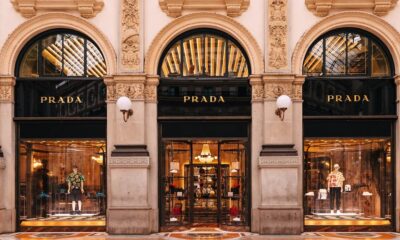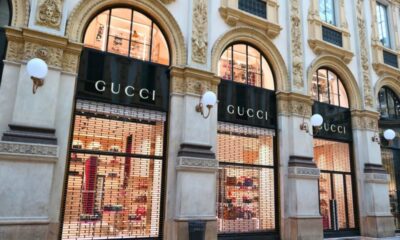Fashion
Italy’s Moncler Group’s 9M 2025 revenues hold steady at $2.13 bn

Moncler brand revenues were €1.55 billion (~$1.8 billion), stable at constant exchange rates compared with 2024. In Q3 2025, revenues reached €514.2 million (–1 per cent cFX YoY), supported by sequential gains in both DTC and wholesale channels, Moncler Group said in a press release.
Italian Moncler Group has reported revenues of €1.84 billion (~$2.13 billion) in the 9M 2025, flat at constant exchange rates.
Moncler brand sales totalled €1.55 billion (~$1.8 billion) and Stone Island €288 million (~$334.1 million), with both showing sequential improvement in DTC performance.
The Americas and China outperformed, offsetting softer EMEA and Japan results.
Asia’s revenues increased 3 per cent cFX to €752.6 million, driven by continued strength in China, partially offset by softness in Japan and Korea. Revenues in Europe, the Middle East and Africa (EMEA) declined 4 per cent cFX to €581 million, affected by subdued tourism flows despite a slight sequential improvement. Americas’ revenues rose 2 per cent cFX to €219.6 million, with Q3 growth of 5 per cent cFX driven by double-digit DTC sales.
Moncler brand’s direct-to-consumer (DTC) channel grew 1 per cent cFX to €1,255.4 million, maintaining stable performance through Q3 despite macroeconomic headwinds. Wholesale revenues fell 5 per cent cFX to €297.8 million, reflecting Moncler’s continued focus on distribution quality and network optimisation.
As of September 30, 2025, Moncler operated 294 directly operated stores (DOS), a net increase of seven since June 2025, including a new boutique in Austin and an expanded SKP location in Beijing. The brand also managed 49 wholesale shop-in-shops, five fewer than the previous quarter.
Stone Island recorded revenues of €288.1 million (~$334.1 million) in 9M 2025 (–1 per cent cFX), with Q3 revenues flat year-on-year. Performance was shaped by a robust DTC segment and a wholesale decline due to shipment timing differences between quarters.
Revenues in Asia rose 13 per cent cFX to €74.2 million, driven by strong momentum in China and Japan. EMEA declined 4 per cent cFX to €196.2 million, as robust DTC growth was offset by weaker wholesale sales. The Americas fell 11 per cent cFX to €17.7 million, though both channels improved sequentially in Q3. The DTC channel advanced 9 per cent cFX to €145.1 million, accounting for over half of total sales, while wholesale revenues dropped 9 per cent cFX to €143.0 million due to shipment timing differences but showed sequential improvement during the quarter.
Stone Island operated 92 directly operated stores and 11 wholesale mono-brand stores as of September 30, 2025. Notably, the brand relocated its flagship store in New York City during the quarter.
Meanwhile, in the third quarter (Q3), group revenues totalled €615.6 million (–1 per cent cFX YoY), with Moncler and Stone Island contributing €514.2 million and €101.4 million respectively. Both brands demonstrated sequential improvement in their direct-to-consumer (DTC) channels, reflecting effective execution amid subdued market demand.
“As we close the first nine months of the year, we remain focused on executing our strategy with discipline, agility, and a strong sense of direction – aware of the challenges around us, but even more committed to the opportunities ahead,” said Remo Ruffini, chairman and CEO of Moncler Group.
“Our recently-launched communication campaign Warmer Together celebrates the values that have defined Moncler for over 70 years—love, connection, and a shared sense of warmth—brought to life through the friendship of two legendary Hollywood icons,” added Ruffini. “These same values come to life in Casa Moncler, our new headquarters and a key milestone in our journey. More than just a space, it is a powerful expression of our culture—where creativity meets innovation, and where our people come together with strong energy and a deep sense of belonging to shape the future of our brand.”
Moncler continues to prioritise organic growth, direct engagement through its retail network, and the elevation of its wholesale distribution. The company also published its 2026 Corporate Events Calendar, available on its website under the Investors section, added the release.
“As we close the first nine months of the year, we remain focused on executing our strategy with discipline, agility, and a strong sense of direction—aware of the challenges around us, but even more committed to the opportunities ahead,” said Ruffini.
Fibre2Fashion News Desk (SG)
Fashion
Ba&sh’s Hélène D’Auriac: “We’re all striving to create an It bag”
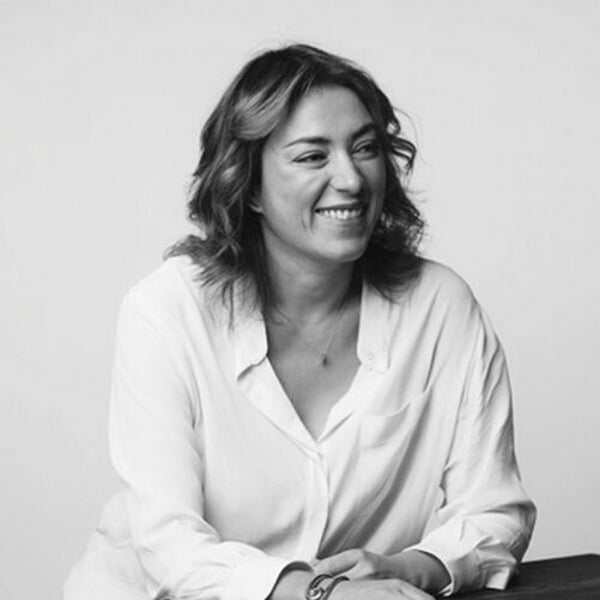
Published
November 7, 2025
Ba&sh spotlighted its handbag range on bus shelters, at Paris Métro exits, and in magazines in September to mark the launch of its Youyou model. It’s a category that’s booming in French premium fashion, strengthening year after year. Having worked at Louis Vuitton, Marc Jacobs and, more recently, Chloé, Hélène D’Auriac now oversees the expanding accessories range for the brand founded by Barbara Boccara and Sharon Krief in 2003. For FashionNetwork.com, she analyses this market and outlines her approach to continuing to grow these offerings.
FashionNetwork.com: In September, you launched the Youyou bag, with a highly visible campaign fronted by Abby Champion, notably on the façade of Galeries Lafayette.
Hélène D’Auriac: The Youyou resonated immediately. It was a surprise, because we were positioning the bag slightly higher than our core range, which is around 395 euros. This one is a 450-euro bag. Over the last two years, we’ve had two major, successful launches.
FNW: In other words?
HDA: Last year, the June Tote took off right from the start. We were managing restocking every week, with around twenty restocks to keep up with demand. Then, this year with the Youyou, it was a pleasant surprise to be able to enter this price bracket. But it also responds to the crisis of confidence the luxury industry is experiencing. Consumers are looking for good value for money, while prices have climbed in some houses that have become a little disconnected from the consumer. They have a keen eye and understand sourcing and materials… This enabled us to capture an audience, because I think we’re starting to gain recognition in the leather goods sector for our expertise. This amplified our success.
FNW: You’re very familiar with the high-end segment. Before joining Ba&sh seven years ago, you worked in luxury houses. What was the challenge of moving to a premium ready-to-wear brand?
HDA: I’m a specialist in luxury accessories. When Ba&sh recruited me, L Catterton was a shareholder. So there was already a luxury culture, but they hadn’t really developed or amplified this category yet. In the course of my career, I’ve seen a few hit-bags come and go. At Ba&sh, we really had to bring in luxury know-how, new sourcing, different methods and designers. This meant instilling an accessories culture within a house that was culturally very ready-to-wear.

FNW: What difference did it make to integrate these skills?
HDA: It enabled us to work on a premium offer, developed in Europe with Italian leathers, and to incorporate responsible standards such as the Leather Working Group label. Barbara and Sharon gave me a great deal of freedom in this new creative territory for them. It was a strong vote of confidence, as the timelines, methods, and sourcing are completely different. I delved into the house’s DNA to understand its signatures, codes, materials, craftsmanship, and effortless spirit, in order to identify everything that makes up Ba&sh’s identity and to apply it particularly to this new category of bags.
They already had products that were starting to emerge, but the aim was to really develop the leather goods category. I think one of the reasons for our success is that we’ve done it authentically, offering a distinctly luxe range with a very competitive price–quality proposition. We’re in the affordable luxury segment, and our aim was to deliver very good quality at one-fifth or even one-tenth of competitors’ prices. The category took off immediately. Since my arrival seven years ago, we’ve seen double-digit growth in this category every year.
FNW: With the strong momentum from the last two years’ launches, is there a recipe for creating a successful bag?
HDA: That’s the question we all ask ourselves. How do you create a hit-bag? I think the first step is to work on the design, aiming for something fairly timeless. The second point is to remain consistent in your message by aligning the proposition with marketing, merchandising and digital, and then to stay the course rather than call everything into question as soon as there’s a fluctuation in sales. We’re seeing this in luxury, with a major return to icons.

FNW: And then how do you leverage it? How do you extend the success to different products?
HDA: Once we have a bestseller, the first thing is to keep expanding the choice of materials and signature details. Leather goods are growing very strongly, and we’re seeing strong progress across all accessories, especially jewellery. We’ve applied the same emphasis on know-how, using recycled silver and truly original design, which has generated extremely strong growth. But to come back to the bag, the question after the hit-bag is how to turn it into an icon.
“Brands that have succeeded in turning their leather goods into icons have an advantage when it comes to withstanding crises.”
FNW: What’s the difference?
HDA: It’s not necessarily a question of volumes. In our industry, a bag that lasts more than a year is already a hit-bag. For luxury brands, the great icons are bags that have been around for 20, 30, sometimes 40 years. In accessible luxury, timelines are a little shorter. So I’d say a bag becomes iconic when it’s been on the market for three to five years. But we want to achieve the same feat as some premium brands from the 80s and 90s, which have had icons for over 20 years. I think this is also important, because brands that have succeeded in turning their leather goods into icons have had an extra advantage in withstanding successive crises in the sector.
FNW: For the past month, you’ve been promoting a new version of the June Tote. It’s not really a new bag…
HDA: It’s the same shape but in a smaller format. This increases the visibility of the model, and in this spirit we’re working on other formats. We’re making progress on material and colour variations, as well as more image-driven elements such as embroidery, stones or fringes, which reflect the brand’s DNA, with proposals due out in January. What’s interesting is that in a small format, the clientele is generally younger, and with the work on details, we’re speaking to more sophisticated customers. These different versions allow us to build a common thread around the model.

FNW: In concrete terms, how many bags do you currently have? And are they all intended to be active on the market at the same time?
HDA: We are careful not to dilute our messaging so as not to lose momentum on the key product. We have three main product families, which come in different formats, details, and colours. We have the June Tote, launched a year ago. The Youyou, launched in September, will appeal to our ready-to-wear customers. We have the Swing, which is a satchel with fringes and is fairly seasonal but corresponds to our aesthetic. And then we have a fourth family of purely seasonal products that last for six months and respond precisely to seasonal trends, catering to our very fashionable and often quite young clientele. But the majority of sales are generated by our first two propositions. This can be explained by the fact that for consumers there’s a strong notion of investment in the purchase of a bag, and they turn to the most iconic models. The very good surprise is that we have two models that are performing very strongly at the same time.
A new phase in consumption
FNW: But you’re not the only ones performing well in this category. How do you explain this dynamic?
HDA: For our part, the category accounts for 11% of sales and we’re aiming to reach 15% within three years. We’re really on a springboard, and I think it’s a strength to have a high level of creativity with beautiful materials and finishes. I also think we’re benefiting from the rise of “new luxury” brands, which offer a very high-end range with an excellent retail experience but the price positioning of the historic luxury brands. We’re entering a new phase where consumers will be looking for very high quality, but will be paying close attention to price. We have opted for European production and possess the retail expertise our customers expect; they now look to accessible luxury brands for creativity that was previously the preserve of luxury.

FNW: You spoke of a common thread that brings models to life for consumers. How do you go about this?
HDA: For accessories, there are a number of major moments. We’ve just come through back-to-school, with all the September issues that focus on accessories. It’s a time to launch new products, as we did with the Youyou. The second major moment, which is the annual sales peak, comes in December. We can double our sales compared with other months. So we’re going to have different strategies: newness at the start of the season, and a focus on bestsellers in December, with the launch of new colours and materials. This involves activations, such as a pop-up at Galeries Lafayette this month; we work with influencers who love the brand, and we’re launching an image campaign that I think will be quite striking at the end of the year. These different approaches enable us to appeal to different profiles. And we’ve found, for example, that 40% of June Tote customers are new, and that 25% are under 35. This also enables us to reach a younger clientele.
FNW: On the strength of this growth, are you planning any launches for 2026?
HDA: We’re trying to slow down a bit. But we have lots of ideas and projects. We see potential around the brand’s identity, for example with an evening offering, but also with textile totes at a more accessible price point. But we really need to come up with a differentiated offer. We also see that our jewellery know-how can be leveraged in a sandal range or, again, for evening. Ba&sh is also in the process of becoming a genuine lifestyle brand, exploring an innovative approach to well-being. Here, we’re working with our ready-to-wear teams to provide complete silhouettes for yoga retreats, for example. We’re also doing this with a Coachella-themed offer, with clutches for going to festivals. It’s exciting because we’re working across several new territories in parallel.
This article is an automatic translation.
Click here to read the original article.
Copyright © 2025 FashionNetwork.com All rights reserved.
Fashion
France’s Sep textiles-apparel-leather manufacturing output up 2.6% YoY
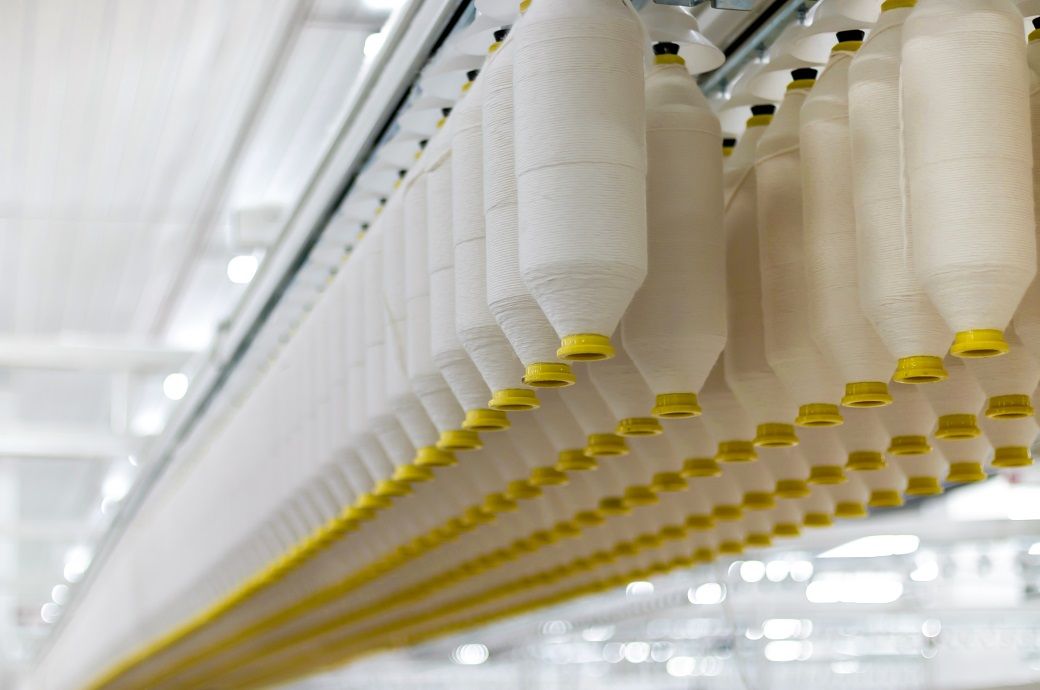
Cumulative French manufacturing output over the July-September quarter was higher by 1.3 per cent year on year (YoY); for the whole industry, it was up 1.1 per cent YoY in the quarter.
Output in the manufacturing of textiles, apparel, leather and related products grew by 2.6 per cent YoY in September this year and dropped by 1.6 per cent quarter on quarter (QoQ) in the July-September quarter, an INSEE release said.
France’s manufacturing output bounced back in September by growing at 0.9 per cent month on month (MoM) after a 1-per cent MoM drop in August.
Output in the manufacturing of textiles, apparel, leather and related items grew by 2.6 per cent YoY in September and dropped by 1.6 per cent quarter on quarter in July-September.
Cumulative manufacturing output in July-September was higher by 1.3 per cent YoY.
The evolution of the manufacturing index between July and August 2025 has been revised downwards, to minus 1 per cent instead of minus 0.7 per cent earlier. The evolution of the index for the whole industry has also been revised downwards, to minus 0.9 per cent from minus 0.7 per cent earlier.
Fibre2Fashion News Desk (DS)
Fashion
After France, Italy squares up to Shein

By
AFP
Published
November 7, 2025
After its troubles in France, Shein faces more opposition in Italy, where the e-commerce giant is wooing shoppers in fashion capital Milan- but where the government and industry are mobilising.
“The textile sector is under attack,” Luca Sburlati, head of Italian fashion trade body Confindustria Moda, told AFP. “Hundreds of thousands of packages arrive in our homes every day. We must react.”
Italy is known for its high-end fashion, the home of global brands including Gucci and Prada, and the industry makes up around five percent of gross domestic product (GDP).
But cheap and cheerful clothes are as popular in Italy as the rest of Europe, including bought through Shein’s ultra-competitive platform.
Founded in China and now based in Singapore, Shein last month staged its first Italian catwalk show in Milan. The same week, the government hosted urgent talks on the impact of “ultra-fast fashion”.
Adolfo Urso, the minister for the “Made in Italy” brand, warned of “an “invasion of low-cost foreign products that harm our producers and put consumers at risk.”
The clothes industry is expected to present a new strategic plan for Italian fashion next week.
At the European Union level, the industry wants an end to the exemption from customs duties for packages worth under 150 euros ($173), following a similar charge in the US.
Critics warn of the environmental impact of clothes so cheap they can be worn once and thrown away, while Shein has also come under scrutiny for conditions at its textile factories.
This week, Italy’s government brought into law a European Union directive that seeks to improve transparency in sales, particularly on the environmental impact of products. Shein has already been sanctioned in this area in Italy and France.
The French government has said it was suspending the platform after outrage over its sale of childlike sex dolls. At the same time, nearly 8,000 people queued for the opening of Shein’s first permanent store, located in Paris’s BHV department store.
In style-conscious Milan, the platform is also hugely popular. “In Milan, you can’t go out if you’re not stylish,” Mattia Trebino told AFP at Shein’s fashion show last month.
The 24-year-old, who wore a faux-crocodile skin jacket, said he receives about four Shein packages every month. “These clothes, you can only wear them once or twice at most. But they’re really cheap,” he said.
Shein’s autumn/winter collection was inspired in part by 1980s Milan, featuring three-piece-suits and faux fur coats.
“The idea was to show that everyone can find their style at Shein- and to respond to our critics,” Luca Raveillon, the show’s French artistic director, told AFP. Gesturing to the collections, he said: “Look, it’s beautiful. It’s good quality, it fits perfectly. “We look great in it, and we can express ourselves with what we wear”- while keeping costs low, as “life is getting expensive”.
Alessia Tresoldi, a 27-year-old Italian influencer sat in the front row, shared images of the show with her one million Instagram followers. Shein “looks at what’s happening on the street”, she told AFP, and described the show as “amazing”.
The website offers a 100% polyester ‘fur’ coat from the show in 15 different colours, starting at 28 euros with free shipping. Boosted by such low prices, European consumers buy 60% more clothing than they did in 2000, and keep it for half as long, according to an October report by consultants The European House-Ambrosetti.
The study’s author, Carlo Cici, said the European fashion industry must innovate more to stand out. “Consumers are very interested in sustainability but aren’t willing to pay for it,” he wrote.
Copyright © 2025 AFP. All rights reserved. All information displayed in this section (dispatches, photographs, logos) are protected by intellectual property rights owned by Agence France-Presse. As a consequence you may not copy, reproduce, modify, transmit, publish, display or in any way commercially exploit any of the contents of this section without the prior written consent of Agence France-Presses.
-

 Tech1 week ago
Tech1 week agoNew diode chain could be used to develop high-power terahertz technologies
-

 Business1 week ago
Business1 week agoChocolate’s reign over Halloween is under threat from inflation, tariffs and high cocoa prices
-

 Tech7 days ago
Tech7 days agoDisney content has gone dark on YouTube TV. Here’s what customers should know
-

 Tech1 week ago
Tech1 week agoGiant, Spooky Animatronics Are 75 Percent Off at the Home Depot
-

 Fashion1 week ago
Fashion1 week agoUS Senate passes legislation challenging Trump’s tariffs on Canada
-
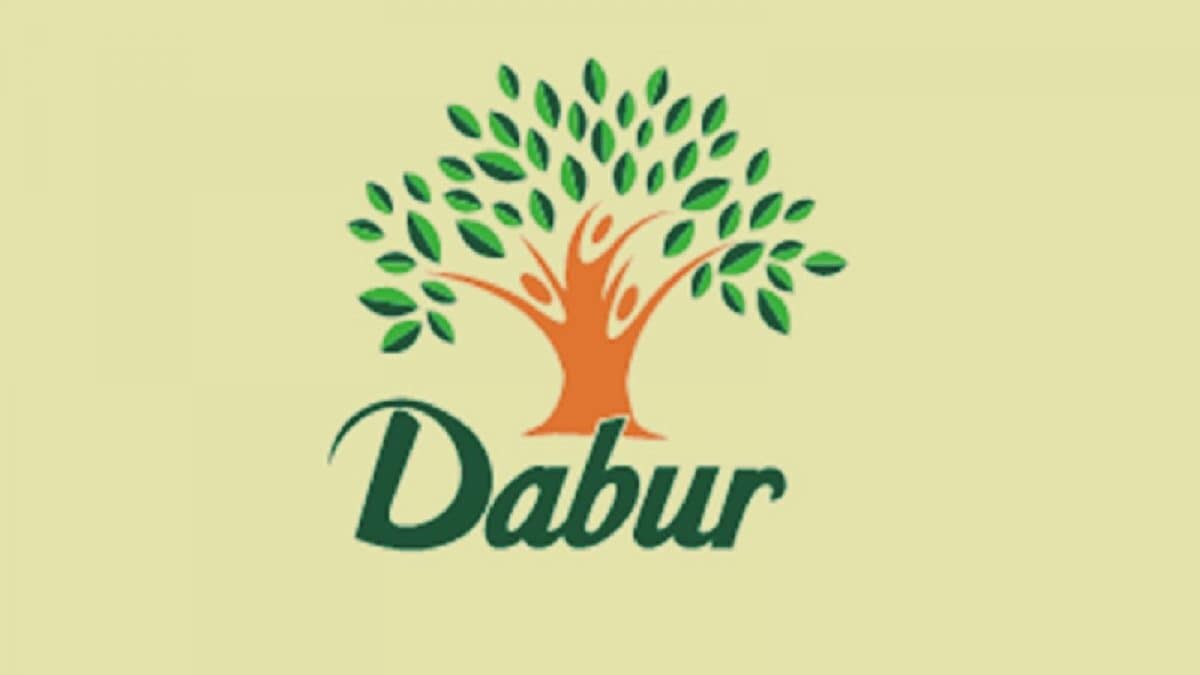
 Business1 week ago
Business1 week agoDabur India Q2 Results: Net Profit Rises 6.5% YoY To Rs 444.8 Crore, Revenue Up 5.4%
-
Sports1 week ago
Ravens are back in the hunt after two straight wins and Lamar Jackson’s return
-

 Fashion1 week ago
Fashion1 week agoAmazon beats cloud growth estimates








